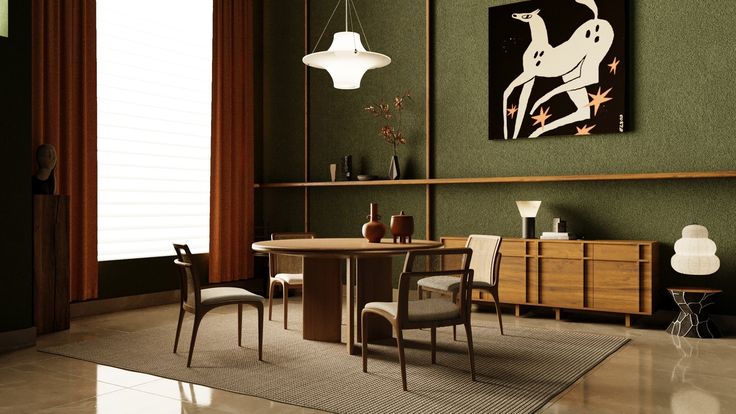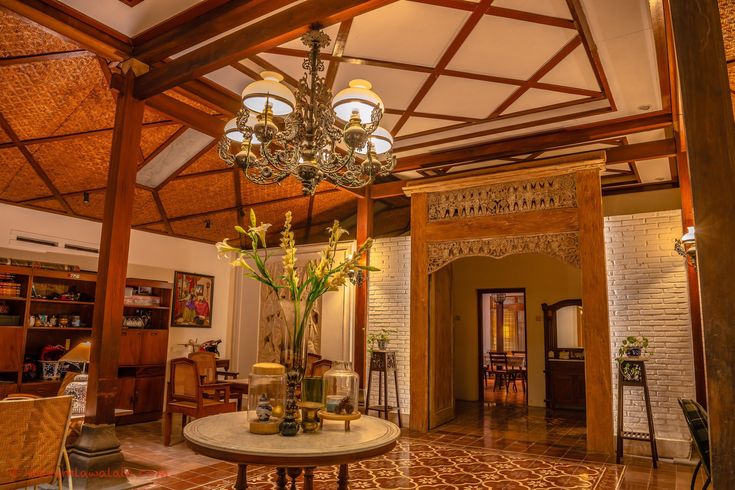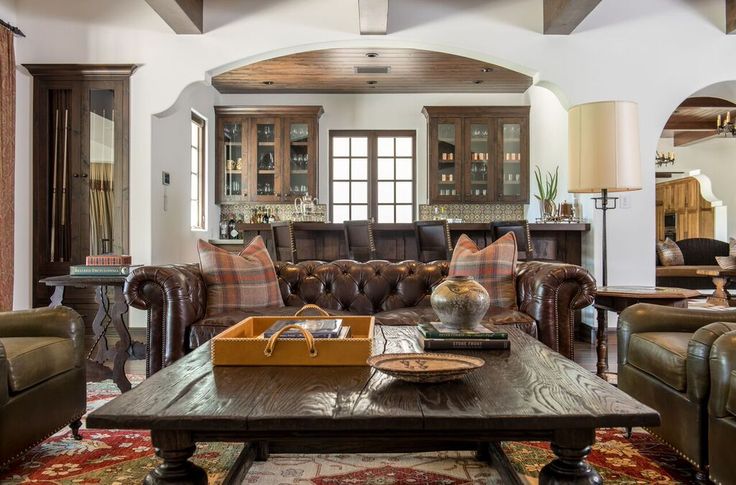Eco-Friendly Home Design: Sustainable Choices for a Greener Future
Eco-friendly home design focuses on creating living spaces that are both aesthetically pleasing and environmentally sustainable. By incorporating green practices and materials, homeowners can reduce their ecological footprint while enhancing the comfort and efficiency of their homes. This comprehensive guide will explore various aspects of eco-friendly home design, including information on top products, their benefits, and how to make the most sustainable choices for your home.
What is Eco-Friendly Home Design?

Eco-friendly home design, also known as sustainable or green home design, involves implementing practices and using materials that minimize environmental impact. This approach focuses on reducing energy consumption, conserving natural resources, and creating healthier living environments. Key elements include:
- Energy Efficiency: Using materials and systems that reduce energy consumption and promote efficiency.
- Sustainable Materials: Choosing products made from renewable resources or those with minimal environmental impact.
- Waste Reduction: Implementing practices that minimize waste and promote recycling and reuse.
- Indoor Air Quality: Selecting materials and systems that improve indoor air quality and reduce pollutants.
Benefits of Eco-Friendly Home Design
Environmental Impact
Eco-friendly home design significantly reduces the environmental impact of residential buildings. By using sustainable materials and energy-efficient systems, homeowners can lower their carbon footprint and contribute to a healthier planet. Sustainable practices help in conserving natural resources, reducing pollution, and mitigating climate change.
Cost Savings
While some eco-friendly products may have a higher initial cost, they often lead to long-term savings. Energy-efficient systems and sustainable materials can reduce utility bills and maintenance costs over time. For instance, high-efficiency appliances and solar panels can lower energy consumption and provide substantial savings on electricity bills.
Enhanced Comfort and Health
Eco-friendly homes often provide better indoor air quality and a more comfortable living environment. Materials that are free from toxic chemicals and proper ventilation systems contribute to a healthier home. Additionally, sustainable design practices can improve overall comfort by optimizing natural lighting and temperature control.
Top Eco-Friendly Home Design Products
1. Energy-Efficient Appliances
Overview
Energy-efficient appliances are designed to consume less energy while providing the same level of performance as standard appliances. These include refrigerators, washing machines, and dishwashers that meet strict energy efficiency guidelines.
Detailed Information
- Features: Look for appliances with the ENERGY STAR® label, which indicates high energy efficiency. Features may include advanced technology for reduced power consumption and improved performance.
- Benefits: Reduced energy bills, lower environmental impact, and improved appliance performance.
Real-World Examples
- LG Electronics ENERGY STAR® Washing Machine
- Pros: High efficiency, large capacity, advanced washing technology.
- Cons: Higher upfront cost.
- Price: Approximately $1,299
- Features: TurboWash™ 360, SmartThinQ® technology, steam cleaning.
- Bosch 800 Series Dishwasher
- Pros: Quiet operation, energy-efficient, sleek design.
- Cons: Expensive compared to standard models.
- Price: Around $1,099
- Features: AutoAir™ option, FlexSpace™ third rack, quiet operation.
- Samsung 4-Door French Door Refrigerator
- Pros: Spacious, energy-efficient, modern design.
- Cons: High initial cost.
- Price: About $2,299
- Features: FlexZone™, Twin Cooling Plus™, ice maker.
Comparison Table
| Product | Use Case | Pros | Cons | Price | Features |
|---|---|---|---|---|---|
| LG Electronics ENERGY STAR® Washing Machine | Laundry | High efficiency, advanced technology | Higher upfront cost | $1,299 | TurboWash™ 360, SmartThinQ® technology, steam cleaning |
| Bosch 800 Series Dishwasher | Dishwashing | Quiet operation, energy-efficient | Expensive | $1,099 | AutoAir™ option, FlexSpace™ third rack, quiet operation |
| Samsung 4-Door French Door Refrigerator | Refrigeration | Spacious, energy-efficient | High initial cost | $2,299 | FlexZone™, Twin Cooling Plus™, ice maker |
2. Solar Panels
Overview
Solar panels convert sunlight into electricity, providing a renewable energy source for your home. Installing solar panels can reduce your reliance on grid power and lower energy bills.
Detailed Information
- Features: Modern solar panels are highly efficient and can be integrated with battery storage systems for better energy management.
- Benefits: Lower energy costs, reduced environmental impact, and potential tax incentives.
Real-World Examples
- SunPower Solar Panels
- Pros: High efficiency, long warranty, excellent performance in low light.
- Cons: Premium price.
- Price: Varies; typically $15,000 – $25,000 for a complete system.
- Features: Maxeon® cells, integrated battery storage options.
- LG Solar Panels
- Pros: High performance, durable, attractive design.
- Cons: Higher cost.
- Price: Approximately $13,000 – $20,000
- Features: High efficiency, robust warranty, aesthetic appeal.
- Canadian Solar Panels
- Pros: Cost-effective, reliable, good performance.
- Cons: Less efficient than premium brands.
- Price: Around $10,000 – $18,000
- Features: Value-for-money, decent performance, good warranty.
Comparison Table
| Product | Use Case | Pros | Cons | Price | Features |
|---|---|---|---|---|---|
| SunPower Solar Panels | Renewable energy | High efficiency, long warranty | Premium price | $15,000 – $25,000 | Maxeon® cells, integrated battery storage |
| LG Solar Panels | Renewable energy | High performance, durable | Higher cost | $13,000 – $20,000 | High efficiency, robust warranty |
| Canadian Solar Panels | Renewable energy | Cost-effective, reliable | Less efficient | $10,000 – $18,000 | Value-for-money, good performance |
3. Low-Flow Water Fixtures
Overview
Low-flow water fixtures, including faucets, showerheads, and toilets, are designed to conserve water while maintaining performance. These fixtures help reduce water usage and lower utility bills.
Detailed Information
- Features: Low-flow fixtures are engineered to use less water without sacrificing performance. Many models are designed with aerators and efficient flushing mechanisms.
- Benefits: Reduced water consumption, lower utility bills, and environmental conservation.
Real-World Examples
- Moen WaterSense® Faucet
- Pros: High efficiency, stylish design, easy installation.
- Cons: May require adjustment to water pressure.
- Price: Around $120
- Features: WaterSense® certified, high-performance aerator.
- Delta WaterSense® Showerhead
- Pros: Water-saving, effective performance, easy to clean.
- Cons: Limited spray settings.
- Price: Approximately $60
- Features: WaterSense® certification, high-pressure spray.
- Kohler Low-Flow Toilet
- Pros: Efficient flushing, reduced water usage, durable.
- Cons: Higher upfront cost.
- Price: About $250
- Features: Dual-flush system, low water consumption.
Comparison Table
| Product | Use Case | Pros | Cons | Price | Features |
|---|---|---|---|---|---|
| Moen WaterSense® Faucet | Water conservation | High efficiency, stylish design | May require pressure adjustment | $120 | WaterSense® certified, high-performance aerator |
| Delta WaterSense® Showerhead | Water conservation | Water-saving, effective performance | Limited spray settings | $60 | WaterSense® certification, high-pressure spray |
| Kohler Low-Flow Toilet | Water conservation | Efficient flushing, reduced water usage | Higher upfront cost | $250 | Dual-flush system, low water consumption |
4. Insulated Windows
Overview
Insulated windows, also known as double or triple-pane windows, are designed to improve thermal performance and reduce energy loss. They are an essential component of energy-efficient home design.
Detailed Information
- Features: Insulated windows have multiple panes with gas-filled spaces between them to enhance insulation and reduce heat transfer.
- Benefits: Improved energy efficiency, reduced heating and cooling costs, and enhanced comfort.
Real-World Examples
- Andersen 400 Series Windows
- Pros: High insulation, customizable, durable.
- Cons: Expensive.
- Price: Approximately $600 – $1,200 per window
- Features: Low-E glass, multiple design options.
- Pella Lifestyle Windows
- Pros: Energy-efficient, various styles, good warranty.
- Cons: Higher cost.
- Price: Around $500 – $1,000 per window
- Features: Triple-pane glass, energy-efficient features.
- Milgard Quiet Line Windows
- Pros: Superior sound insulation, energy-efficient.
- Cons: Premium price.
- Price: About $700 – $1,300 per window
- Features: Triple-pane glass, advanced insulation.
Comparison Table
| Product | Use Case | Pros | Cons | Price | Features |
|---|---|---|---|---|---|
| Andersen 400 Series Windows | Insulation | High insulation, customizable, durable | Expensive | $600 – $1,200 per window | Low-E glass, multiple design options |
| Pella Lifestyle Windows | Insulation | Energy-efficient, various styles | Higher cost | $500 – $1,000 per window | Triple-pane glass, energy-efficient features |
| Milgard Quiet Line Windows | Insulation | Superior sound insulation, energy-efficient | Premium price | $700 – $1,300 per window | Triple-pane glass, advanced insulation |
5. Recycled Material Flooring
Overview
Recycled material flooring, such as bamboo, reclaimed wood, and recycled rubber, uses materials that have been repurposed to create durable and stylish flooring options.
Detailed Information
- Features: These flooring options are often made from sustainable or recycled materials and offer a unique aesthetic.
- Benefits: Reduced environmental impact, unique design options, and durability.
Real-World Examples
- Cali Bamboo Flooring
- Pros: Eco-friendly, durable, stylish.
- Cons: Higher price.
- Price: Approximately $4 – $7 per sq. ft.
- Features: Sustainable bamboo, various finishes.
- Reclaimed Wood Flooring by Carlisle
- Pros: Unique look, sustainable, high-quality.
- Cons: Expensive, inconsistent appearance.
- Price: Around $6 – $12 per sq. ft.
- Features: Reclaimed wood, various styles.
- Eco-Flex Rubber Flooring
- Pros: Durable, easy to maintain, eco-friendly.
- Cons: Limited aesthetic options.
- Price: About $3 – $6 per sq. ft.
- Features: Recycled rubber, slip-resistant.
Comparison Table
| Product | Use Case | Pros | Cons | Price | Features |
|---|---|---|---|---|---|
| Cali Bamboo Flooring | Flooring | Eco-friendly, durable, stylish | Higher price | $4 – $7 per sq. ft. | Sustainable bamboo, various finishes |
| Reclaimed Wood Flooring by Carlisle | Flooring | Unique look, sustainable, high-quality | Expensive, inconsistent appearance | $6 – $12 per sq. ft. | Reclaimed wood, various styles |
| Eco-Flex Rubber Flooring | Flooring | Durable, easy to maintain, eco-friendly | Limited aesthetic options | $3 – $6 per sq. ft. | Recycled rubber, slip-resistant |
How to Buy Eco-Friendly Products
Kitchen and Home Appliances
Where to Buy: Check out major retailers such as Home Depot, Lowe’s, and Amazon for a wide selection of eco-friendly appliances. Many manufacturers also offer direct sales through their websites.
How to Buy: Browse online or visit local stores to compare features and prices. Look for ENERGY STAR® labels and other certifications to ensure the product’s efficiency.
Price Range: Varies based on the product and brand. Expect to invest around $500 – $2,299 for high-quality, eco-friendly appliances.
Solar Panels
Where to Buy: Major solar panel providers include SunPower, LG, and Canadian Solar. You can also find local solar installation companies.
How to Buy: Contact solar panel providers for quotes and installation services. Many companies offer free consultations to assess your needs and recommend the best solution.
Price Range: Typically $10,000 – $25,000 for a complete solar panel system, depending on the size and efficiency.
Low-Flow Water Fixtures
Where to Buy: Purchase low-flow fixtures from retailers such as Moen, Delta, and Kohler.
How to Buy: Choose fixtures that meet WaterSense® standards and fit your bathroom or kitchen design. Many retailers offer online shopping and installation services.
Price Range: Fixtures range from $60 to $250, depending on the type and brand.
Insulated Windows
Where to Buy: Look for insulated windows from companies like Andersen, Pella, and Milgard.
How to Buy: Get quotes from window suppliers and installation companies. Many offer comprehensive services, including measurement, installation, and warranty.
Price Range: Approximately $500 – $1,300 per window, depending on the size and type.
Recycled Material Flooring
Where to Buy: Recycled material flooring can be found at Cali Bamboo, Carlisle, and Eco-Flex.
How to Buy: Visit product websites or local flooring retailers to compare options. Many suppliers offer samples and installation services.
Price Range: Varies from $3 to $12 per sq. ft., depending on the material and brand.
FAQs
1. What are the most effective eco-friendly home design strategies?
Effective strategies include installing energy-efficient appliances, using sustainable materials, incorporating solar panels, and improving insulation. These practices reduce energy consumption, lower utility bills, and enhance the home’s environmental performance.
2. How do I choose the best eco-friendly products for my home?
Consider factors such as energy efficiency, sustainability, and overall performance. Look for certifications like ENERGY STAR® for appliances and WaterSense® for water fixtures. Research product reviews and consult with professionals to make informed decisions.
3. Are eco-friendly products more expensive?
While some eco-friendly products have a higher upfront cost, they often lead to long-term savings through reduced energy and water bills. Additionally, many products qualify for tax incentives or rebates that can offset initial costs.
4. Can I install eco-friendly products myself, or should I hire a professional?
Some eco-friendly products, like low-flow fixtures, can be installed DIY-style. However, complex installations, such as solar panels or insulated windows, often require professional assistance to ensure proper setup and optimal performance.
5. Where can I find more information about eco-friendly home design?
Explore online resources from reputable environmental organizations, home improvement blogs, and product manufacturers. Many websites offer detailed guides, product reviews, and expert advice on implementing eco-friendly design practices.






